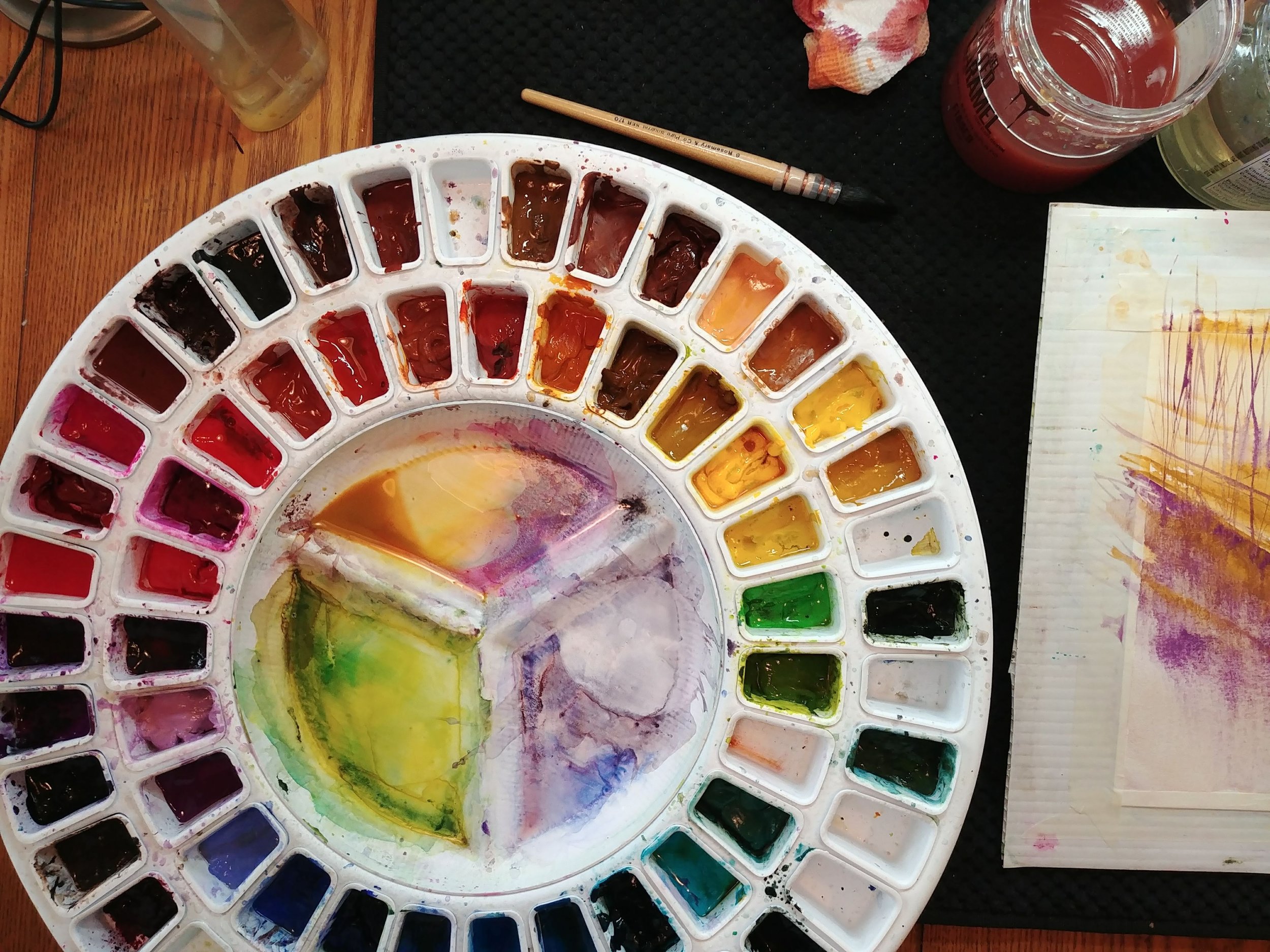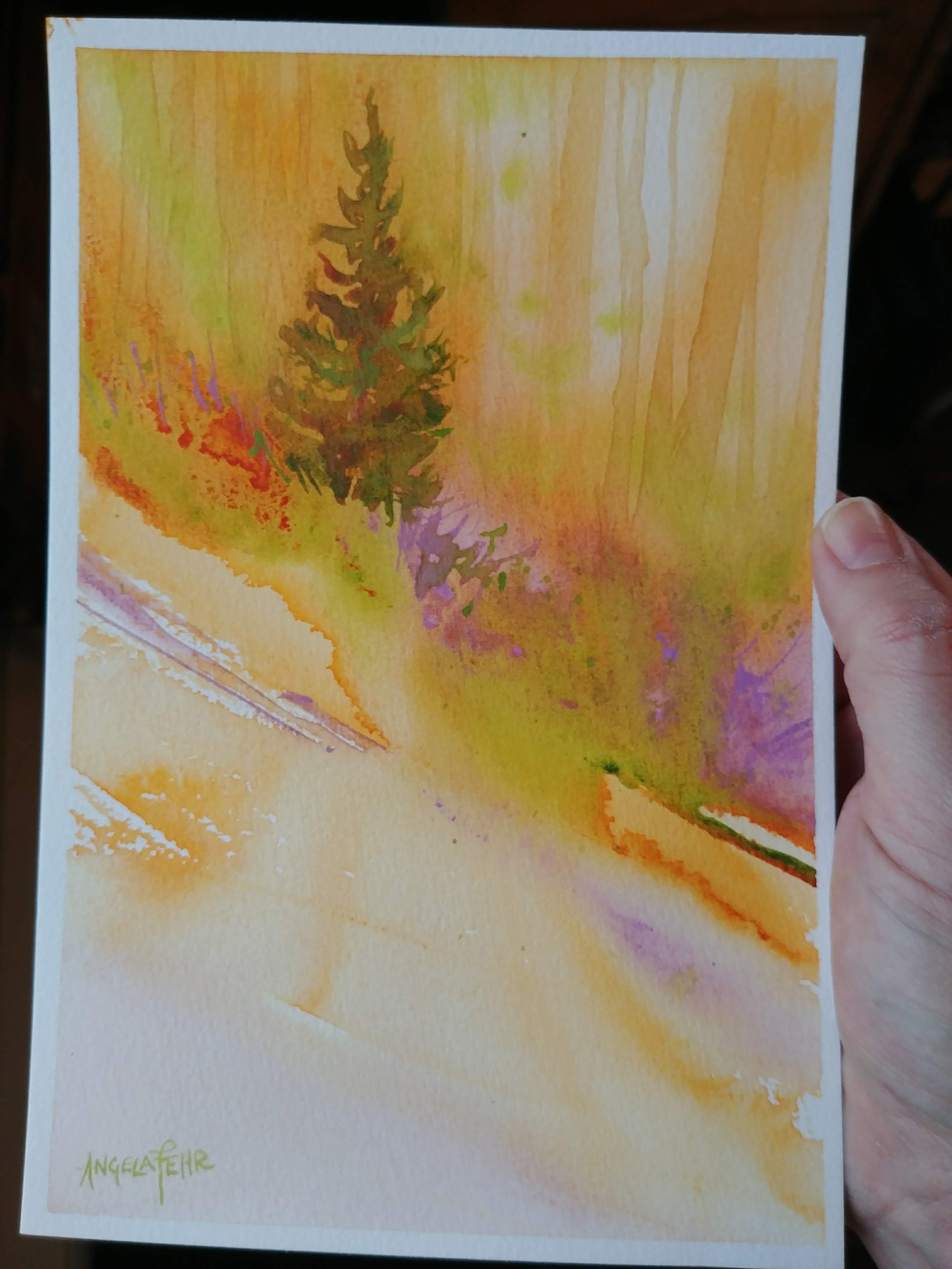On Loving Watercolor
When you love watercolour, it will love you back. I drew and painted as a child because I loved it. I took my first watercolour class at the age of seventeen because I loved art enough to want to do it better.
I don't remember the first time I felt the thrill of seeing colour swish across paper in the magical way that watercolour has, but I remember the last time, because it was the last time I painted, just a day ago.
Somewhere along the way, wanting to paint well became just wanting to paint.

Twenty years' experience means I don't have to think a lot about wanting to master watercolour; I get to have a bit of confidence in my ability to make watercolour do things that look pleasing to me. I don't spend time worrying about whether I have what it takes, I just get to paint and enjoy the process, and while some of that comes from confidence borne of experience, a big part of this is that somewhere along the way, I gave myself permission to love watercolour unreservedly.
I have to remind myself of this when I enter the studio; that's why I do studio warm ups. Because when I come to a painting wanting something from that painting, something more than just the joy of painting, it doesn't go so well. When that painting begins to carry the weight of expectations, to become the painting that will prove to the world that I'm a true artist, that I have something to say, when it becomes the next big award winner in my mind, or my newest masterpiece, when the painting becomes about me, it's transformed from a precious and magical thing into a rock. Dead weight. Pressure.

I push myself into this place every time I enter the studio. I will linger over warm ups as long as it takes to remind me that I am here for the paint. For veils of flowing colour, for a rainbow of vibrant, juicy pigment, for the "whoosh" of fresh colour into a wet wash that makes me gasp. For a splatter of cobalt teal. For a wild, wordless brush stroke. For tiny marks, for smooth washes, for Quinacridone and Dioxazine and Cobalt. For dagger stripers and mops. For squirrel, sable and synthetic. For shadows of cool hues and heat of red and gold. For lost & found edges and salt effects. For watermarks and blooms and cauliflowers; whatever you wish to call them. I'm here to watch and anticipate as a painting transforms, stroke by stroke.
Last night I sat with fellow watercolourists and we talked about the power of art. We have our personal art collections, small pieces of each other's art that we've collected over the years. We talk about how we never get tired of looking at those beautiful original paintings. Each stroke mattered to the artist who created it, and that hand of the artist gives the paintings a timeless enduring beauty.
Things that are sacred and holy come out of the purest, most unselfish love. I'm just now realizing that painting for the love is the very best way to create anything of significance.

